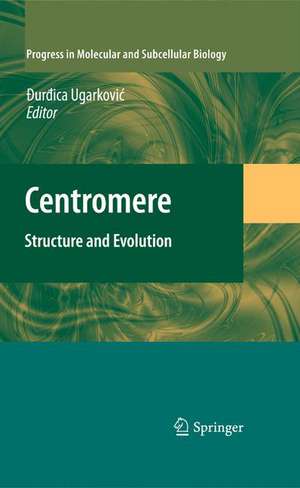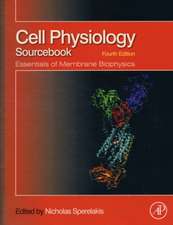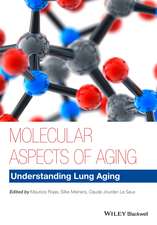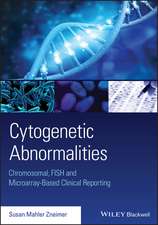Centromere: Structure and Evolution: Progress in Molecular and Subcellular Biology, cartea 48
Editat de Durdica Ugarkovicen Limba Engleză Hardback – 29 mai 2009
| Toate formatele și edițiile | Preț | Express |
|---|---|---|
| Paperback (1) | 939.77 lei 6-8 săpt. | |
| Springer Berlin, Heidelberg – 19 oct 2010 | 939.77 lei 6-8 săpt. | |
| Hardback (1) | 947.35 lei 6-8 săpt. | |
| Springer Berlin, Heidelberg – 29 mai 2009 | 947.35 lei 6-8 săpt. |
Din seria Progress in Molecular and Subcellular Biology
- 18%
 Preț: 1115.46 lei
Preț: 1115.46 lei - 18%
 Preț: 1403.04 lei
Preț: 1403.04 lei - 18%
 Preț: 1112.30 lei
Preț: 1112.30 lei - 18%
 Preț: 1117.03 lei
Preț: 1117.03 lei - 18%
 Preț: 1222.49 lei
Preț: 1222.49 lei - 18%
 Preț: 1382.21 lei
Preț: 1382.21 lei - 18%
 Preț: 1232.26 lei
Preț: 1232.26 lei - 18%
 Preț: 1222.80 lei
Preț: 1222.80 lei - 24%
 Preț: 1045.93 lei
Preț: 1045.93 lei - 18%
 Preț: 956.50 lei
Preț: 956.50 lei -
 Preț: 387.20 lei
Preț: 387.20 lei - 15%
 Preț: 639.73 lei
Preț: 639.73 lei - 15%
 Preț: 633.19 lei
Preț: 633.19 lei - 15%
 Preț: 634.18 lei
Preț: 634.18 lei - 15%
 Preț: 634.00 lei
Preț: 634.00 lei - 15%
 Preț: 640.24 lei
Preț: 640.24 lei - 5%
 Preț: 714.27 lei
Preț: 714.27 lei - 15%
 Preț: 634.32 lei
Preț: 634.32 lei - 15%
 Preț: 637.28 lei
Preț: 637.28 lei - 15%
 Preț: 637.78 lei
Preț: 637.78 lei - 15%
 Preț: 637.28 lei
Preț: 637.28 lei - 15%
 Preț: 649.06 lei
Preț: 649.06 lei -
 Preț: 387.75 lei
Preț: 387.75 lei - 18%
 Preț: 1220.75 lei
Preț: 1220.75 lei - 18%
 Preț: 1224.99 lei
Preț: 1224.99 lei - 18%
 Preț: 946.87 lei
Preț: 946.87 lei - 15%
 Preț: 633.35 lei
Preț: 633.35 lei - 18%
 Preț: 944.36 lei
Preț: 944.36 lei -
 Preț: 387.96 lei
Preț: 387.96 lei - 15%
 Preț: 633.02 lei
Preț: 633.02 lei - 15%
 Preț: 640.88 lei
Preț: 640.88 lei - 5%
 Preț: 720.10 lei
Preț: 720.10 lei
Preț: 947.35 lei
Preț vechi: 1155.30 lei
-18% Nou
Puncte Express: 1421
Preț estimativ în valută:
181.30€ • 188.58$ • 149.67£
181.30€ • 188.58$ • 149.67£
Carte tipărită la comandă
Livrare economică 14-28 aprilie
Preluare comenzi: 021 569.72.76
Specificații
ISBN-13: 9783642001819
ISBN-10: 3642001815
Pagini: 170
Ilustrații: X, 184 p. 35 illus., 15 illus. in color.
Dimensiuni: 155 x 235 x 17 mm
Greutate: 0.5 kg
Ediția:2009
Editura: Springer Berlin, Heidelberg
Colecția Springer
Seria Progress in Molecular and Subcellular Biology
Locul publicării:Berlin, Heidelberg, Germany
ISBN-10: 3642001815
Pagini: 170
Ilustrații: X, 184 p. 35 illus., 15 illus. in color.
Dimensiuni: 155 x 235 x 17 mm
Greutate: 0.5 kg
Ediția:2009
Editura: Springer Berlin, Heidelberg
Colecția Springer
Seria Progress in Molecular and Subcellular Biology
Locul publicării:Berlin, Heidelberg, Germany
Public țintă
ResearchCuprins
The Epigenetic Basis for Centromere Identity.- The Centromere-Drive Hypothesis: A Simple Basis for Centromere Complexity.- Centromere-Competent DNA: Structure and Evolution.- The Role of ncRNA in Centromeres: A Lesson from Marsupials.- Evolutionary New Centromeres in Primates.- Structure and Evolution of Plant Centromeres.
Textul de pe ultima copertă
The centromere is a chromosomal locus that regulates the proper pairing and segregation of the chromosomes during cell division. Despite their conserved, essential function, centromeres are characterized by the rapid evolution of both centromeric DNA and proteins.
This book presents current views on centromere structure and identity. It deals with the epigenetic concept of centromere establishment and maintenance as well as with the role of DNA and centromeric transcripts in centromere formation and function. Special emphasis is placed on centromere evolution: different evolutionary models are discussed in detail and the latest research on the evolution of new centromeres and neocentromeres is presented.
This book presents current views on centromere structure and identity. It deals with the epigenetic concept of centromere establishment and maintenance as well as with the role of DNA and centromeric transcripts in centromere formation and function. Special emphasis is placed on centromere evolution: different evolutionary models are discussed in detail and the latest research on the evolution of new centromeres and neocentromeres is presented.
Caracteristici
Unique overview on the centromere research of the last decade Special focus on centromere evolution








